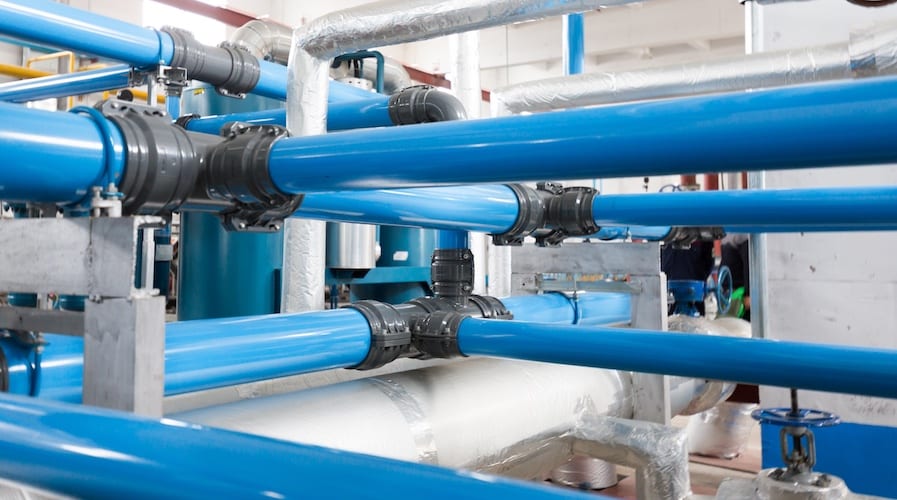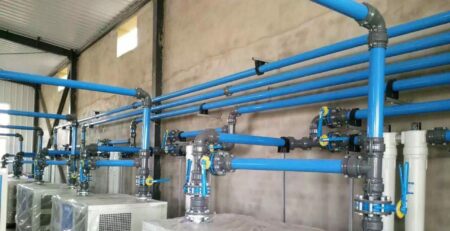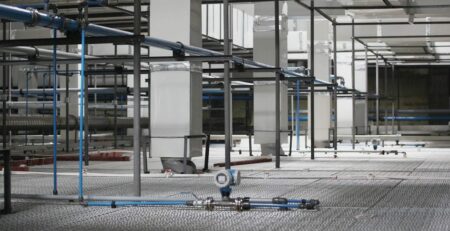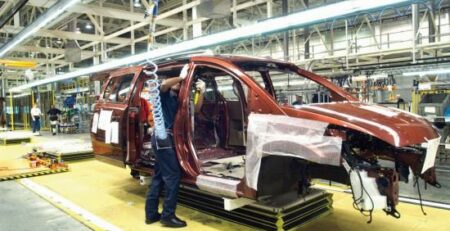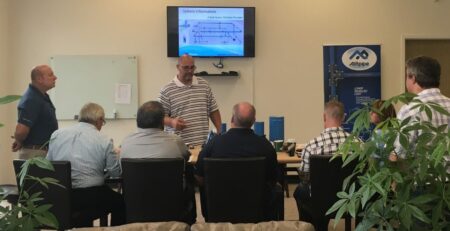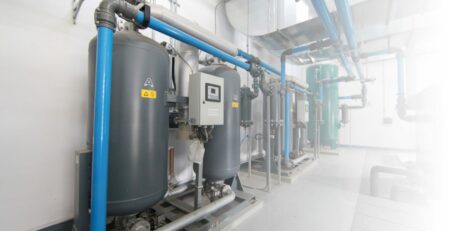Benefits of Using Aluminum Piping for Compressed Applications
Engineers use various piping materials for compressed air systems, these include black iron, galvanized steel, copper, stainless steel and even plastic (PVC). In more recent years, aluminum piping has become an option considered by many contractors, architects and engineering firms. Aluminum piping provides many benefits for compressed air systems in many different applications.
There are two common types of pipe used for compressed air systems are black iron and galvanized steel pipe. Due to a variety of factors, more compressed air systems installed today use black iron or galvanized pipe. These factors include:
- Contractors are familiar with these materials.
- Material costs are low.
- The pipe and compressed air system fittings are readily available.
- Steel pipe is rated for high pressure.
However, there are five important reasons why aluminum piping is a superior material to use for most compressed air installations today, each of which addresses a key disadvantage to traditional pipe systems.
1. Lowering Installation Costs
When it comes to a compressed air system, more time is needed to install the system when using steel pipe compared to installing a system using other materials. One factor behind this is that steel pipe needs to be threaded to join pipes and install the proper fittings. Properly threading steel pipe requires special threading equipment and skilled workers to operate it. Not only do these workers cost more than unskilled workers, it also drives up installation costs. Also, threading pipes is dirty work requiring cutting fluids to get a good thread, and that must be cleaned from the pipe before you can start using the system. Threading also creates a lot debris.
Modifying and maintaining a compressed air system made with steel pipe is more challenging than modifying and maintaining systems built from other materials. One reason for this is that steep pipe is much heavier than other materials. Steel pipe also so heavy, so it requires more labor to handle the piping while making modifications than it would to make modifications to a system made with other piping materials.
2. Minimizing System Leaks
Another problem with threaded connections is that they will inevitably leak. It has been estimated that eight to ten percent of the compressed air in a system will leak through connections, causing compressors to run harder and longer. This can drive up utility costs as a result.
3. Aluminum Piping Doesn’t Corrode
A common issue with using steel pipe is that moisture inside the system will cause pipes to rust from the inside out. Even if the compressed air system has a moisture trap, there will be some moisture in the system and corrosion will occur. Even galvanized steel pipe will corrode, as not all pipes are galvanized both inside and out.
Corrosion causes several issues, beginning with air flow restricted by a rough inner surface caked with deposits caused by corrosion build up. In addition, loose scale deposits collect over time and create pressure drops, making the air compressor work harder to maintain the pressure of the system. In extreme scenarios, loose scale can completely clog a line or damage equipment connected to a line. Of course, corrosion and loose scale affects air quality, making it unsuitable for applications that require clean air.
4. Aluminum Outperforms the Copper Alternative
Another solution for compressed air systems is copper. Copper is attractive because it doesn’t corrode as much as steel pipe. It can corrode, but it doesn’t have pipe scaling like steel pipe, which means that a copper system will have fewer air flow problems and air cleanliness problems than steel pipe. However, it can still experience flow restriction over time.
A copper solution still comes with its own set of disadvantages, though. One of the biggest being the cost of copper material itself. The price of copper increased by 20 percent in October of 2011, and subsequently, so did the price of copper pie. Prices have since dropped, but the fact remains that copper pipe continues to be considerably more expensive than steel pipe.
Another downside is that fitting must be soldered, and this causes its own set of issues. Soldering requires an open flame, which makes this a safety issue in some environments. Solder also requires some skill to accomplish, an increasing problem in an era when skilled labor is becoming harder to find. If a joint is not properly soldered, it will leak, and leaks increase energy costs.
Lastly, not all types of copper piping are suitable for use with high air pressures. So, if you are planning to use copper, you need to ensure that you choose a pipe that can handle the pressure.
5. PVC and Stainless Steel Present Obstacles in Cost and Durability
Steel pipe and copper pipe are the two most widely used materials for compressed air systems, but you will also sometimes find systems that use PVC pipe and stainless steel pipe. In fact, it is against OSHA standards and highly dangerous to use PVC pipe for compressed air systems. Over time PVC becomes brittle and may explode when transporting air under high pressure.
Stainless steel is another option, particularly when the compressed air system is to be installed in a corrosive environment. In some scenarios, stainless steel is considered an option depending on the fluctuating cost of copper pipe.
As with other steel pipe systems, however, stainless steel systems can be costly to install. Threaded stainless steel pipe can be challenging to seal, often requiring the use of lubricants to thread correctly. Welding stainless steel drives up installation costs and safety concerns through the need of a skilled welder, and the additional risk of smoke inhalation, damage to eye sight and fire.
The Case for Aluminum Piping
Recently, aluminum piping has become a solid alternative to other piping materials for compressed air systems. Compared to other materials, installing a compressed air system using aluminum piping offers many advantages, including:
Aluminum pipe systems are much easier to install and to modify than steel or copper pipe systems. Since aluminum pipe is supplied ready for use, labor savings of 50 percent can be achieved. No specific preparations beyond cutting, deburring and chamfering are required, nor are special tools needed. Aluminum pipe is calibrated, which means that its diameter is strictly controlled As a result, associated quick connect components will fit securely, and each connection is automatically secured.
Aluminum pipe is much lighter than other materials. This reduces installation and modification costs.
Another factor that makes aluminum pipe systems easier to install and modify is that it doesn’t require threading or soldering.
The compressed air provided by a system built with aluminum piping is much cleaner than air delivered by a steel pipe system. The requires of ISO 8573-1: 2010 air quality standards are met with aluminum pipe systems, should the application require it. Cleaner air also means lower maintenance costs as well.
The corrosion-resistant properties of aluminum pipe mean optimal air flow, reduced energy costs and better air quality.
The fittings utilized with aluminum pipe systems fit securely and leak far less than the fittings used with threaded systems. This directly translates into energy savings and improved plant productivity.
Naturally, with any material, there are some disadvantages. For instance, material costs are higher for aluminum pipe systems compared to steel pipe systems. However, when compared to copper pipe systems, material costs for aluminum are about the same or even lower. Another great fact, the working pressure for aluminum is 232 PSI at 115 degrees. Overall, though, for many applications, aluminum piping is a solid alternative for compressed air systems. These are just a few of the many benefits of using aluminum piping systems for compressed air systems. Contact AIRpipe today for more information!

